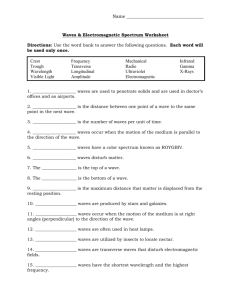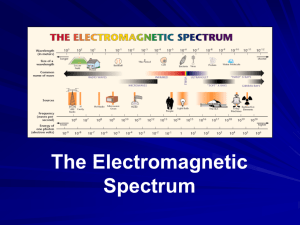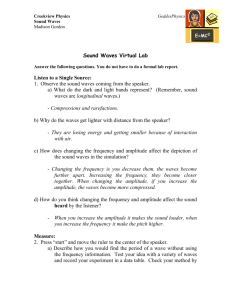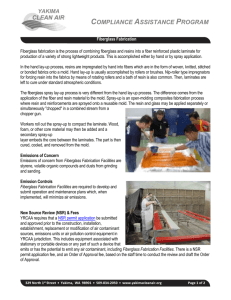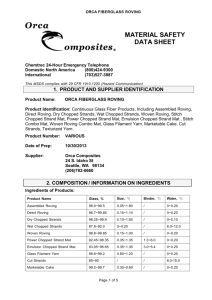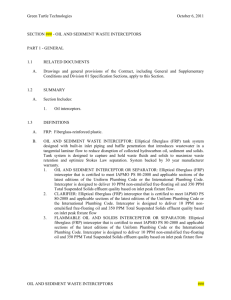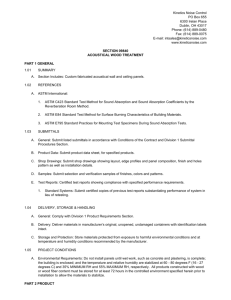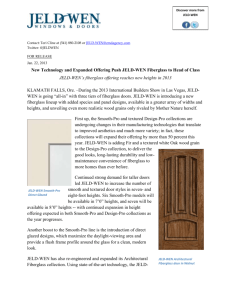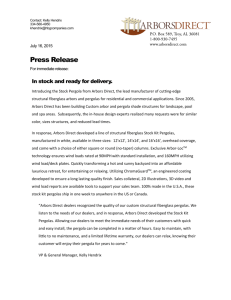The main objective in this experiment is to show how a mesh can
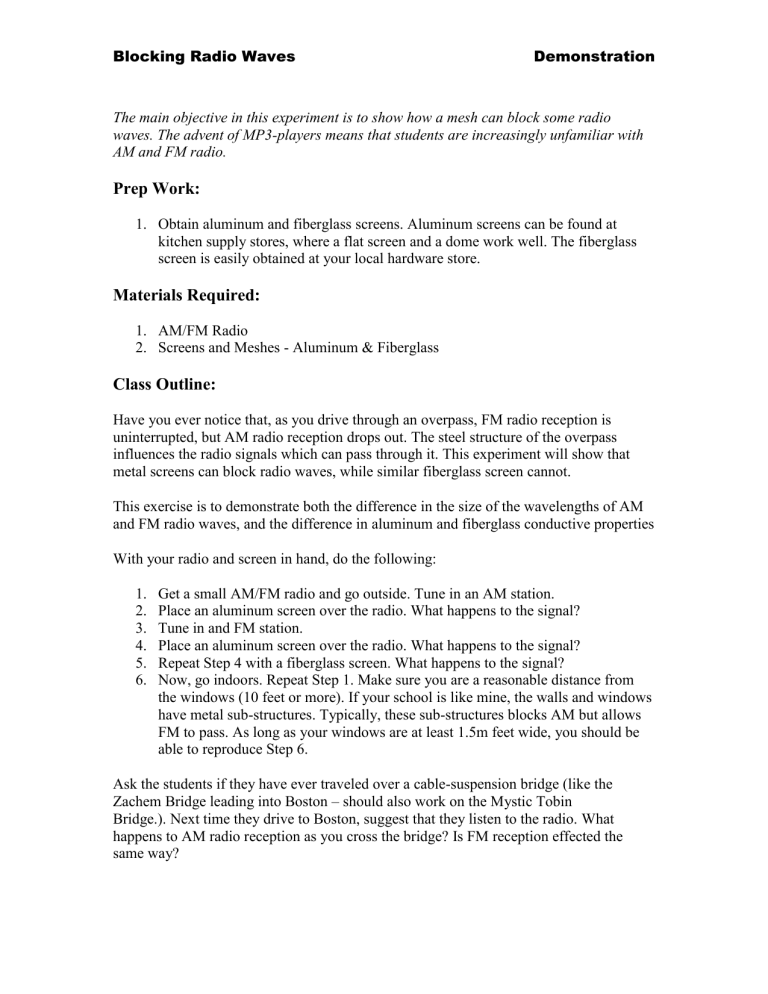
Blocking Radio Waves Demonstration
The main objective in this experiment is to show how a mesh can block some radio waves. The advent of MP3-players means that students are increasingly unfamiliar with
AM and FM radio.
Prep Work:
1.
Obtain aluminum and fiberglass screens. Aluminum screens can be found at kitchen supply stores, where a flat screen and a dome work well. The fiberglass screen is easily obtained at your local hardware store.
Materials Required:
1.
AM/FM Radio
2.
Screens and Meshes - Aluminum & Fiberglass
Class Outline:
Have you ever notice that, as you drive through an overpass, FM radio reception is uninterrupted, but AM radio reception drops out. The steel structure of the overpass influences the radio signals which can pass through it. This experiment will show that metal screens can block radio waves, while similar fiberglass screen cannot.
This exercise is to demonstrate both the difference in the size of the wavelengths of AM and FM radio waves, and the difference in aluminum and fiberglass conductive properties
With your radio and screen in hand, do the following:
1.
Get a small AM/FM radio and go outside. Tune in an AM station.
2.
Place an aluminum screen over the radio. What happens to the signal?
3.
Tune in and FM station.
4.
Place an aluminum screen over the radio. What happens to the signal?
5.
Repeat Step 4 with a fiberglass screen. What happens to the signal?
6.
Now, go indoors. Repeat Step 1. Make sure you are a reasonable distance from the windows (10 feet or more). If your school is like mine, the walls and windows have metal sub-structures. Typically, these sub-structures blocks AM but allows
FM to pass. As long as your windows are at least 1.5m feet wide, you should be able to reproduce Step 6.
Ask the students if they have ever traveled over a cable-suspension bridge (like the
Zachem Bridge leading into Boston – should also work on the Mystic Tobin
Bridge.). Next time they drive to Boston, suggest that they listen to the radio. What happens to AM radio reception as you cross the bridge? Is FM reception effected the same way?
Blocking Radio Waves Demonstration
Students may be able to relate to this analogy. If you were standing in front of a chainlinked fence, you could certainly throw a handful of BBs at the fence and expect the vast majority to pass straight through. These would be the FM waves. Imagine trying to throw a basketball through the same fence. It won’t pass. This would be like AM waves – too big to pass through the opening in the fence (or under bridges or through steel substructures in a building).
It may or may not be desirable to get very quantitative with your class, depending on the level of the students involved. If you don't think it will scare them off you can tell them that a mess of a size on the order of one tenth of the wave length of a radio wave will essentially act as a solid object to the radio wave. Am radio waves are on the order of
300 m wavelengths (at 1000 kHz). FM radio waves have wavelengths of 3 m (at 100
MHz).
CONCLUSION: The size of the mesh that "blocks" a radio signal is directly related to the wavelength of the radio signal.
Special thanks go to Rock Woodland of the MIT-Millstone facility for coming up with the original idea of blocking radio signals with different sized screens and continued discussions that lead to this activity.



